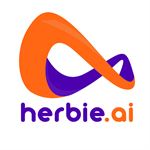Ever since the likes of ChatGPT and Midjourney became societal phenomena, tech evangelists, doomsayers, and everyone in between seemingly haven’t stopped talking about AI. Its human-like learning and communication abilities are impacting billions, from savvy investors through hopeful patients to people looking for bespoke interactions.
Where does your business stand in all of this? If you haven’t already begun to harness AI’s transformative potential, here are several compelling reasons why you should.
Insight Integration & Predictive Analytics
AI’s ability to process quantities of data that would overwhelm a team of humans is its most appealing business-boosting attribute. Machine Learning and Deep Learning, to a greater extent, can ingest data created by all the machinery, sensors, SaaS tools, etc., a company relies on. While nonsensical to us, the right algorithms can uncover patterns within the static.
Unlike past analytics software, AI has the ability and agency to use its findings to propose solutions and recommendations decision-makers can understand and act on. Imagination really is the limit here.
AI can already track machine performance and identify abnormalities or the need for maintenance before such problems become visible to responsible personnel. It also drives data-driven decision-making processes in sales, logistics, and supply chain management.
Embracing AI’s decision-making capabilities isn’t possible without reassessing how different specialized teams within companies acquire and use data. The siloed approach of the past needs to give way to holistic data integration, with long-term benefits for employees, customers, and profit margins.
Personalization
The AI boom is bringing businesses a big step closer to achieving perfect harmony between their offerings and customers. Personalization plays a key role because discerning consumers expect and reward it. Combining already available information while transparently obtaining more direct customer information allows for more effective marketing while providing better value.
For example, educational institutions may use machine learning and large language models to create individualized curricula. These can more easily account for students’ interests, skills, and potential learning disabilities. An upscale restaurant might use the information diners provide to create a unique ambiance, while banks could offer enticing loan deals based on clients’ interests and purchasing habits.
Businesses that want to offer data-driven personalized services must exercise accountability in safeguarding customer data privacy. They have to ensure data storage practices comply with industry standards and local laws while allowing clients to alter or have information on them deleted.
Individuals are already successfully using data removal services to opt out of data brokers’ databases. Businesses will likely have to develop closer relationships with such services as well to ensure they store, protect, and dispose of sensitive customer data appropriately.
Automation
Automation has been in full swing long before AI’s mainstream debut. However, most previous efforts focused on work that was dangerous, required precision, or could be done with little skill. Today, AI automation increasingly tackles rote white-collar work on one end and creativity on the other.
Initial results suggest a net positive. Employees can have their CRMs schedule follow-up messages or keep track of customers’ idiosyncrasies, freeing time up for more productive tasks. While Generative AI won’t replace the graphic design department any time soon, it will allow fewer people to maintain a high creative output.
New Cybersecurity Challenges
Cybercriminals are among AI’s earliest and most prolific adopters. Phishing attacks jumped more than tenfold after ChatGPT became available, for example. Automated vulnerability exploits, and malware that adapt to detection efforts are another part of the growing threat landscape that AI was vital in birthing.
Businesses that hope to prosper must combine established cybersecurity practices with new developments.
On the one hand, tools like team password managers won’t be going anywhere. They make access control easier, and a focus on unique password generation prevents single compromised passwords from doing cascading harm. AI might be innovating cybercrime on multiple levels, but it’s as ineffective as older methods in brute forcing complex passwords or cracking the kind of encryption managers use for their credential vaults.
Advancements in cybercrime naturally prompted cybersecurity experts to develop innovative countermeasures. Antivirus and anti-malware programs no longer depend on threat lists but can predict and flag suspicious behavior. Insider threats and hijacked accounts are more effectively identifiable, too, thanks to behavioral biometrics that examine and draw attention to deviations from expected user patterns.
Conclusion
Even when one looks past the buzzwords and hype, it’s clear that artificial intelligence is shaping up to be the primary technological transformation driving force of our time. Businesses can choose to adopt and potentially shape its evolution or find themselves growing less competitive with each new development. Which side of history will your company find itself on?












